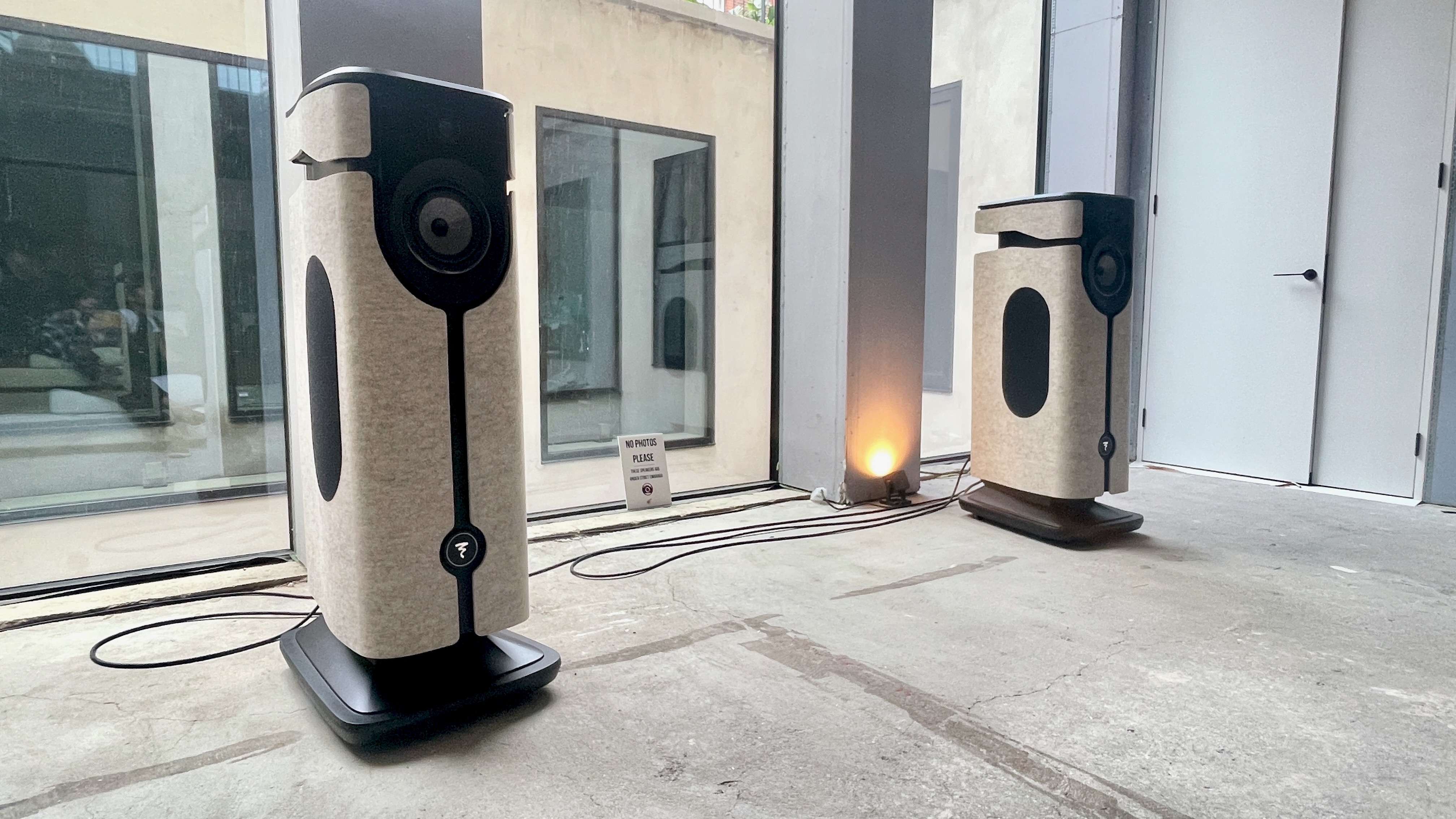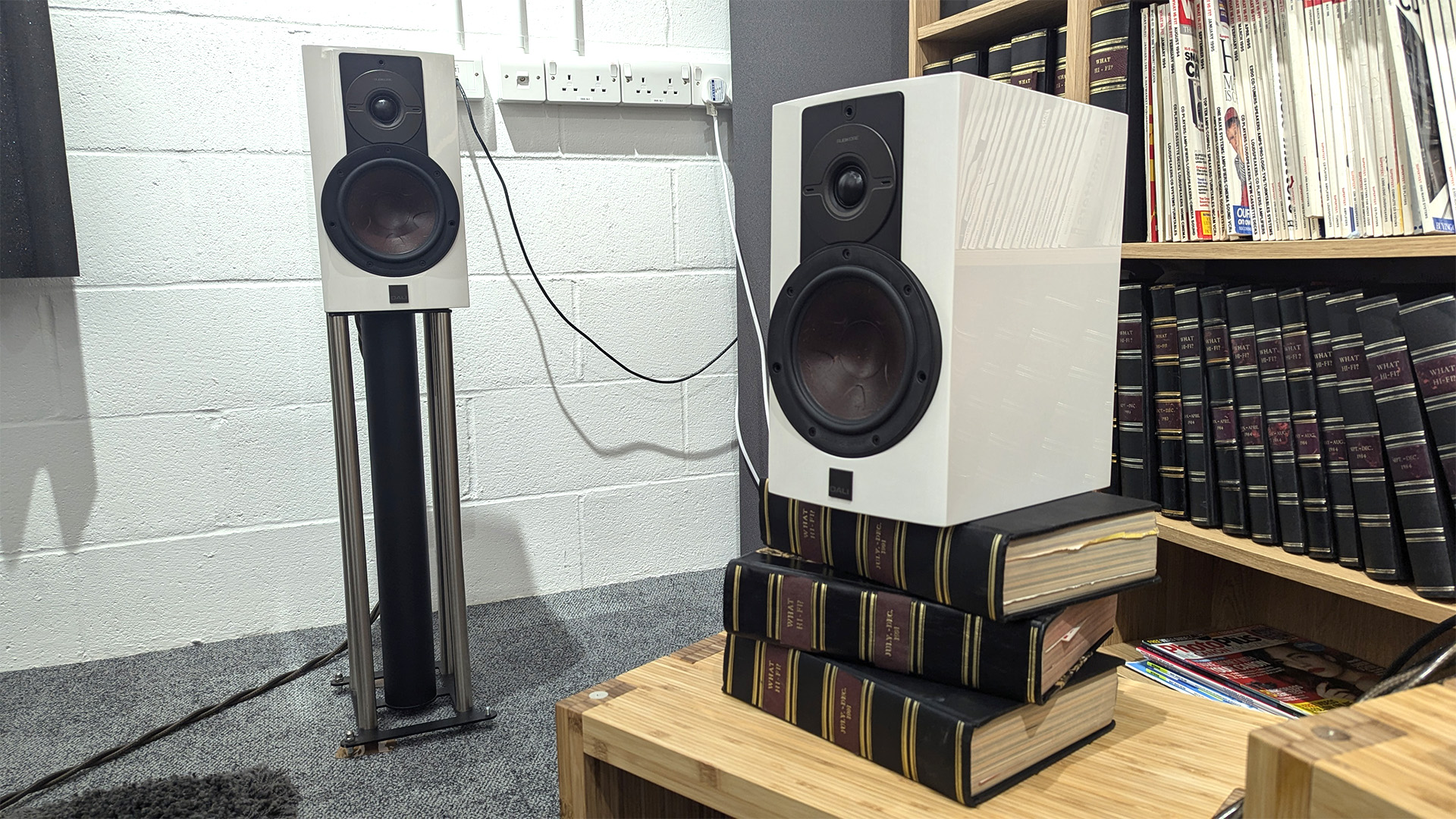10 mistakes to avoid with your stereo speakers
Don't let sound quality suffer

Full confession. When I first walked into the What Hi-Fi? stockroom over two decades ago, I didn’t know all the ins and outs of stereo speakers.
All I knew was that they made a sound, and that you needed somewhere to put them. However, I soon learned all about the vast world of floorstanders and standmounters by spending hours listening to and working with the senior test team.
That meant a crash course in speaker basics, which included not just a physics refresher, but also more practical teachings on how to make the most of your speakers and what to avoid if you want them singing at their sweetest.
And I’ve put that knowledge down in the list below. Some of it will seem obvious, but hopefully, there are a few pointers in there that will help squeeze an ounce or two of extra performance.
Buying the wrong speakers for your room

Yes, our speaker reviews are here to try to help you with your buying decisions. We know how the speakers work in our listening room and can make an educated guess as to how they will perform in other rooms.
But, it pays to do your own research before splashing the cash. If the speakers are too small for your room, you will lose bass weight, authority and dynamics will suffer.
The speaker just won’t be able to drive the air in the room properly. And the opposite also applies - too big for your room and bass will dominate, and the sound will be completely unbalanced.
The latest hi-fi, home cinema and tech news, reviews, buying advice and deals, direct to your inbox.
On a similar theme, if your speakers are going to be placed close to a wall, buy a pair designed for this purpose. Using bungs on speakers with rear-facing bass reflex ports can help tame low frequencies, but it really isn’t ideal.
Placing speakers in the corner of a room will only amplify problems with low frequencies, so we would do our best to avoid this completely if possible. If you can’t, it’s even more vital you pick a suitable pair that is designed to work in such a position.
If you’re in doubt, we would urge you to ring the speaker manufacturer themselves. They will know more about a model’s suitability more than anyone, and you will be able to talk through how you are planning on using them.
Not matching speakers with system

In the same way your electronics can have a sonic character, your speakers can also favour a particular flavour of sound.
This is why you want all the different elements of your system to pull in the same direction. For example, don’t go for neutral-sounding speakers if your electronics are full of character.
Similarly, if your electronics are punchy, powerful and dynamic-sounding, don’t match them with a pair of speakers lacking in this department.
If you do, you’ll have the different components fighting against each other instead of working together in harmony.
Not maintaining your speakers

It will pay to give a little TLC to your speakers now and again. We’re not talking about treating them to a speaker spa day (now there’s an idea), more giving them a little check over to make sure they’re still in good working order.
We’re talking about things like bolts and speaker terminals. Over time, the bolts that hold the drive units in place can work themselves loose because of all the vibrations.
Remember that wood can compress and shrink over time, and this can also affect the tightness of the drive units.
Also, take a look around the rear of your speakers at their speaker terminals. If the banana plugs on your speaker cable get oxidised over time, this can affect performance.
If you insert the plugs back into the speaker and take them out a handful of times, this should help scratch away the oxidised layer, making for a better connection between your cables and the speakers.
And, some speakers can be bolted onto their stands, so once again, just check they haven’t started to loosen their grip.
Placing them too far apart

Without wanting to go all mathematical on you, the sound coming out of your left speaker plus the sound coming out of your right speaker equals a complete stereo image.
Now, if your speakers are in different post codes (ZIP codes for our friends across the pond) your stereo image will break up and you will simply be hearing each speaker’s individual output. Which, we assume, isn’t what the artist intended.
Similarly, if you have got something big between the speakers, e.g a cabinet, or TV, or your speakers are too close together, this will also interfere with your stereo imaging.
If in doubt, consult the manual that comes with your speakers; it might include recommended distances (and positions) that you can experiment with.
Remember, even small positioning changes can have a big influence on the end product, so it’s important to get it right before you sit down for a listen.
Putting a bookshelf speaker on a bookshelf

Okay, in some quarters, small speakers are referred to as bookshelf speakers. This helps differentiate them from floorstanding speakers, but just because the word bookshelf is there doesn’t mean you should use them on a bookshelf.
In fact, unless they've been specifically designed for this kind of placement, this is really the last place you should be putting them, for a number of reasons…
Shelves aren't very rigid, so they won’t be able to offer your speakers proper support. The speakers should really be placed on a pair of quality speaker stands that will hold them rigidly.
Your shelves are also unlikely to be at the correct height. You need to make sure the tweeters are around ear height to get the best sound possible. If not, there will be a lack of balance in their frequency response and stereo imaging will suffer.
Finally, placing them on a bookshelf will mean they are enclosed, which in turn encourages reflections that will mess with the sound that comes out of them.
Buying poor quality stands

Tied to the above point, make sure the stands you go for are of suitable quality.
Ideally, you want something made from a sturdy material that gives your speakers a solid foundation from which to work.
They need to allow the speaker cabinet to stay still, reducing or removing the effects of outside vibrations, allowing only movement from the drive units.
Sometimes, manufacturers actually design and sell their own stands for specific speaker models, so you at least know they shouldn't be taking anything away from the sound.
- Need some support? Here are the best speaker stands
Leaving the grilles on

Leaving the grilles on your speakers makes a lot of sense, especially if there are small children running around looking to poke a tiny finger in places they really shouldn't.
But, in our experience, most speakers sound best with the grilles off (although there are specific examples, such as our reference ATC SCM50, which are designed to be used with them on). It’s worth checking with the manufacturer if you are not sure.
Why do we generally recommend removing the grilles? The frame of the grille can act as a sound reflector.
Sound waves radiate out from the drivers and actually bounce off the frame and back over the rest of the acoustic output, which muddies the presentation.
Also, the grille cloth itself can affect the level of higher frequencies, giving a more closed-in sound.
Leaving the spikes off

Leave the spikes off your speaker stands (or floorstanders for that matter) and the sound will suffer. It really is that simple.
Spikes allow you to keep your speakers level and stable, exactly what you need to hear them at their very best. Make sure you check regularly that they are screwed in tightly because this will affect the performance too.
If you don't like the thought of spikes spearing through your favourite carpet or scratching your wooden floors, you can always put a coin under the spikes to prevent any damage.
Sitting too close

We know not all room sizes are the same, and adding furniture to the equation means you can't always sit in the optimal position all the time. But we would try to refrain from cuddling up close to your speakers.
If you do, integration is going to suffer, and you will be left hearing the output from the individual drive units instead of listening to them acting as a seamless whole.
Again, consult your manual for suggestions regarding speaker positioning and make sure you do your research so you have a speaker that's a suitable size for your room dimensions and layout.
Using poor-quality speaker cable

Will bellwire work? Yes. You’ll get a sound, sure; but will you be making the most of the components used in the speakers? In our opinion, no, you won’t. We tend to suggest budgeting 10-15 per cent of your system cost on cables - you really don’t have to spend a fortune.
MORE:
5 mistakes to avoid when setting up your record player
How to choose the right speakers and get the best sound
Our pick of the best speaker cables you can buy
And the best stereo speakers we've tested for every budget
Andy is Deputy Editor of What Hi-Fi? and a consumer electronics journalist with nearly 20 years of experience writing news, reviews and features. Over the years he's also contributed to a number of other outlets, including The Sunday Times, the BBC, Stuff, and BA High Life Magazine. Premium wireless earbuds are his passion but he's also keen on car tech and in-car audio systems and can often be found cruising the countryside testing the latest set-ups. In his spare time Andy is a keen golfer and gamer.
You must confirm your public display name before commenting
Please logout and then login again, you will then be prompted to enter your display name.

